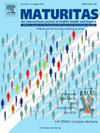The feasibility and effects of a telehealth-delivered physical therapy program for postmenopausal women with urinary incontinence: A pilot mixed-methods study
IF 3.9
2区 医学
Q2 GERIATRICS & GERONTOLOGY
引用次数: 0
Abstract
Objectives
This study investigated the feasibility and effectiveness of a telehealth-delivered pelvic floor muscle training program for postmenopausal women with urinary incontinence, in comparison with face-to-face pelvic floor muscle training.
Stud design
This was a pilot mixed-methods study that included a non-inferiority randomized controlled trial with a nested qualitative study. Community-dwelling postmenopausal women (>40 years) with urinary incontinence were recruited and randomly allocated to 12 weeks of telehealth or face-to-face pelvic floor muscle training. The face-to-face group received supervised training twice weekly, while the telehealth group had eight virtual sessions plus weekly telephone coaching.
Main outcome measures
Assessments at baseline, post-intervention, and three-month follow-up included feasibility, anthropometry, body composition, hand grip strength, functional exercise capacity, physical activity levels, the severity of urinary incontinence, and pelvic floor muscle function (assessed through vaginal manometry, transperineal ultrasound, and digital palpation).
Results
Among 55 potential participants, 22 enrolled (40 % consent rate). Attendance was 100 %, with 63.3 % adherence to the home program. Satisfaction was high (very satisfied: 71 % face-to-face, 89 % telehealth). Both groups reported increased confidence in pelvic floor muscle training. Urinary symptoms and pelvic floor function improved in both groups, with benefits sustained at three months. Telehealth pelvic floor muscle training also enhanced grip strength. No significant differences were found between groups.
Conclusions
Telehealth pelvic floor muscle training appears to be a feasible and potentially effective alternative to face-to-face therapy for postmenopausal women with urinary incontinence. Larger studies are needed to confirm these preliminary findings and guide future interventions.
Trial registration
ClinicalTrials.gov (NCT05970796); date of registration: 29/07/2023.
远程医疗提供的物理治疗方案对绝经后妇女尿失禁的可行性和效果:一项试点混合方法研究
目的:本研究探讨了远程医疗提供盆底肌训练方案对绝经后尿失禁妇女的可行性和有效性,并与面对面盆底肌训练进行了比较。这是一项试验性混合方法研究,包括一项非劣效性随机对照试验和一项嵌套定性研究。招募社区居住的绝经后尿失禁妇女(40岁),随机分配到12周的远程保健或面对面盆底肌肉训练。面对面组每周接受两次有监督的培训,而远程保健组每周接受八次虚拟会议和电话指导。基线、干预后和三个月随访时的评估包括可行性、人体测量、身体组成、握力、功能性运动能力、体力活动水平、尿失禁严重程度和盆底肌肉功能(通过阴道测压、经会阴超声和指诊进行评估)。结果55名潜在参与者中,22人入选(同意率40%)。出勤率为100%,63.3%的人遵守家庭计划。满意度很高(非常满意:71%面对面,89%远程医疗)。两组都报告了骨盆底肌肉训练的信心增加。两组患者的泌尿系统症状和盆底功能均有所改善,并在3个月后持续获益。远程保健盆底肌肉训练也增强了握力。各组间无显著差异。结论:对于绝经后尿失禁妇女,骨健康盆底肌肉训练是一种可行且潜在有效的替代面对面治疗的方法。需要更大规模的研究来证实这些初步发现并指导未来的干预措施。临床试验注册(NCT05970796);注册日期:2023年7月29日。
本文章由计算机程序翻译,如有差异,请以英文原文为准。
求助全文
约1分钟内获得全文
求助全文
来源期刊

Maturitas
医学-妇产科学
CiteScore
9.10
自引率
2.00%
发文量
142
审稿时长
40 days
期刊介绍:
Maturitas is an international multidisciplinary peer reviewed scientific journal of midlife health and beyond publishing original research, reviews, consensus statements and guidelines, and mini-reviews. The journal provides a forum for all aspects of postreproductive health in both genders ranging from basic science to health and social care.
Topic areas include:• Aging• Alternative and Complementary medicines• Arthritis and Bone Health• Cancer• Cardiovascular Health• Cognitive and Physical Functioning• Epidemiology, health and social care• Gynecology/ Reproductive Endocrinology• Nutrition/ Obesity Diabetes/ Metabolic Syndrome• Menopause, Ovarian Aging• Mental Health• Pharmacology• Sexuality• Quality of Life
 求助内容:
求助内容: 应助结果提醒方式:
应助结果提醒方式:


